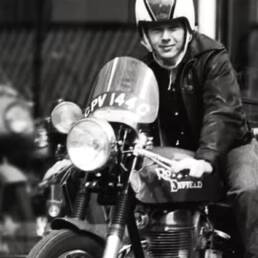Miss Tagore and Mohun Bagan's Historic Shield Win
- History
- Culture
- Music
Our final story to celebrate Women’s History Month, features the incredible Miss Tagore who was instrumental behind Mohun Bagan’s historic IFA Shield win in 1911. A story on the curious tale of Miss Tagore.
On 1st August 1911, shortly after Mohun Bagan’s historic Shield win, The Manchester Guardian reported on certain Miss Tagore being the happiest person after the victory who was the epicentre of Bengal’s athletic movement in 18/19th century.
Manchester Guardian was convinced without Miss Tagore’s driving force, Bengali men wouldn’t have competed against the strong built British men on the sports arena. And they’re not particularly wrong.
The interesting part of the story is, Miss Tagore wasn’t her real identity, as the journalist mistakenly assumed that due to her close affinity to the Tagore family. She was none other than Sarala Ghoshal, niece of Rabindranath Tagore.
She was a social reformer, writer, a strong feminist and one of the few women of her time to participate in the independence movement. While her work in the non-cooperation movement often alludes to literatures, her influence in the athletic movement has been mostly faded.
Sarala Devi interacted with many Indian men, including wrestlers from Punjab, who despite their immense strength, was terrified of the British. This prompted her to become heavily motivated in removing the fear of white skin from the Indian psyche.
She was determined to shape the mindset of the Indian and to improve the physical fitness of the youth of Bengal, she opened a gymnasium on 26 Baliganj Circular Road. The place where history began.
In this arena on 26 Baliganj Circular Road, basic training in wrestling, boxing, firearms, knife-throwing and fencing was given by experts. One of them was Murtaza, who used to demonstrate sticks and sword skills to the youth.
She later organized festivals like Birastami and Pratapaditya Utsav in 1902/03 in the Akhara to reignite the masculinity of Bengali men to defy their cowardice stereotypes in front of the British.
A Sanskrit hymn was recited and a wreath of swords was offered to the martyrs and heroes of the country to inaugurate the festival. Following that, young people would demonstrate physical and weapons skills.
She continued her sharp writing to inspire Bengalis to acquire strength and stamina through physical training. “Bilati Ghushi bonam Deshi Kil” (a native cuff vs a British punch) was one such article emphasizing the cultivation of physical strength.
In the era when playing football or having any form of physical activity was merely a pastime and social stigma for Bengali men, Miss Tagore, a fiery woman from Jorasnako, broke the barrier for the men.
While the stories of women empowering women often fancy us, Sarala Devi was a rare warrior who reformed the phycological texture of Indian men. In her own words, “in a society, women are the driving force, men merely the machine.” How true is that?







